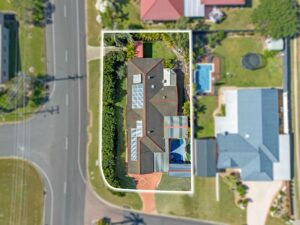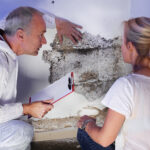This guide is designed to help prospective buyers thoroughly assess a property before making a purchase decision, and is not necessarily comprehensive in nature. It’s important for buyers to consider hiring an accredited building and pest inspector for a more in-depth examination of the property.
1. Structural Integrity:
– Examine the foundation for cracks or signs of settlement.
– Check for any visible damage to the walls, ceilings, and floors.
2. Roof Condition:
– Inspect the roof for missing or damaged tiles, or rust.
3. Windows and Doors:
– Test all windows and doors for proper operation.
– Check the condition of seals and weather-stripping.
4. Plumbing System:
– Check for water stains on walls and ceilings.
– Run Taps and check for water pressure concerns.
– Inspect for leaks under sinks and around plumbing fixtures.
5. Electrical System:
– Test light switches and outlets for functionality.
– Check the electrical panel for any signs of wear or outdated wiring.
6. HVAC Systems
– Inspect the heating, ventilation, and air conditioning systems.
– Check for the age and condition of the furnace and air conditioner.
7. Appliances:
– Test the functionality of kitchen appliances. – Check the age and condition of major appliances.
8. Pest Inspection:
– Look for signs of pests such as termites, rodents, or insects.
– Inspect the property for any damage caused by pests.
9. Insulation and Ventilation:
– Check the insulation in the attic and walls.
– Ensure proper ventilation to prevent moisture-related issues.
10. Exterior:
– Inspect the exterior walls for cracks or signs of damage.
– Check the condition of siding, paint, and trim.
11. Landscaping and Drainage:
– Evaluate the slope of the land to ensure proper drainage.
– Check for water pooling around the foundation.
12. Environmental Concerns:
– Look for signs of mould or mildew in damp areas.
– Check if the property is in a flood zone or susceptible to natural disasters such as bushfires.
13. Neighbourhood and Community:
– Research the neighbourhood for safety, amenities, and local services.
– Consider the proximity to schools, public transportation, and shopping.
14. Future Renovation Potential:
– Assess the potential for future renovations or expansions.
– Check local zoning regulations and restrictions.
15. Home Security:
– Evaluate the security features of the property, including doors, windows, and any existing security systems.
– Consider the overall safety of the neighbourhood.








